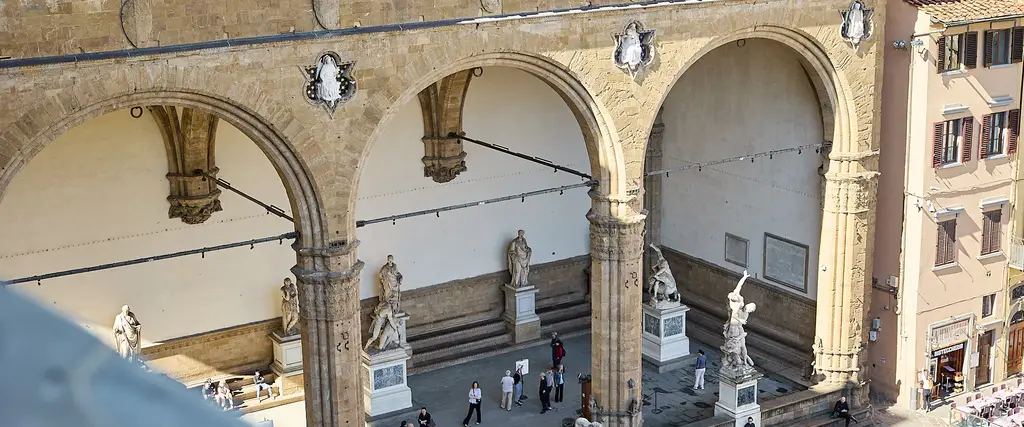
Loggia de' Lanzi
A magnificent architectural structure on the right side of Piazza della Signoria, adjacent to the Uffizi Gallery, built in the second half of the 14th century (also known as the Loggia dell'Orcagna, after the artist to whom it is attributed, or Loggia della Signoria).
Originally conceived as a covered place for public ceremonies and gatherings, at the time of Grand Duke Cosimo I the Lanzichenecchi (commonly known as 'Lanzi'), a garrison of imperial soldiers defending the Palace, were stationed there.
During the 16th century, it was transformed into an open-air museum, displaying numerous sculptures, including 16th-century masterpieces by Benvenuto Cellini (the Perseus) and Giambologna (the Rape of the Sabine Women and Hercules and the Centaur Nessus).
Dating from the Roman period are the Matrone, female figures along the back wall, the group of Patroclus and Menelaus, and the Lion on the right; while the Rape of Polyxena by Pio Fedi is from the 19th century. On the roof of the loggia - in the Medici era, a hanging garden - is the terrace of the Uffizi cafeteria.
Nicola Neri per Comune di Firenze